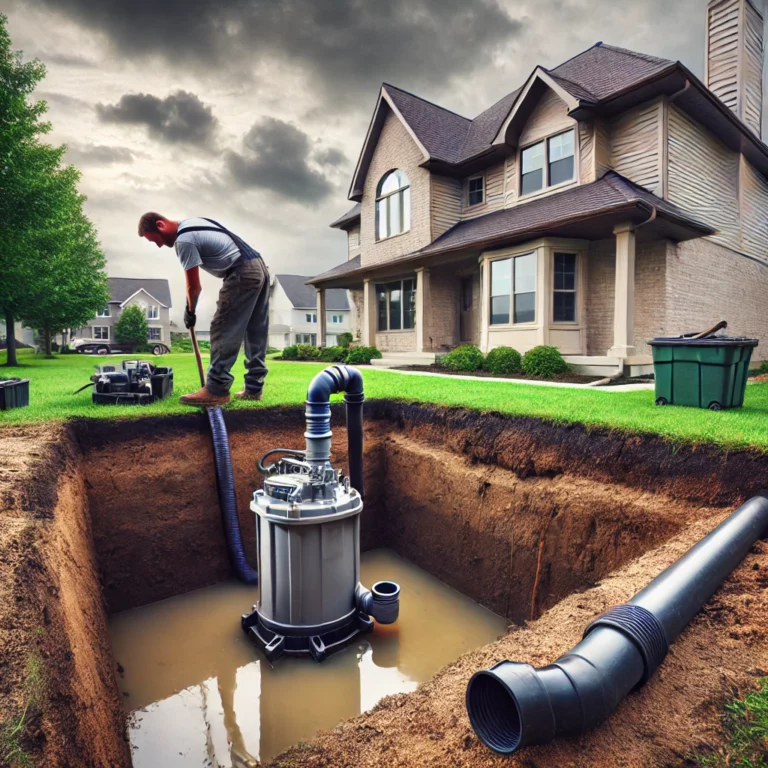Upgrading Your System: Replacing Traditional Septic Pumps with Submersible Pumps
When it comes to maintaining your septic system, choosing the right type of pump can make a world of difference. Traditional septic pumps have served their purpose over the years. Still, advancements in technology have led to the development of submersible pumps, which offer a range of benefits that can enhance the efficiency and longevity of your septic system. In this article, we’ll explore the advantages of upgrading from traditional septic pumps to submersible pumps, providing you with the knowledge you need to make an informed decision for your home.
Understanding the Basics: Traditional vs. Submersible Septic Pumps
Before diving into the benefits of submersible pumps, it’s essential to understand the critical differences between traditional and submersible septic pumps.
Traditional Septic Pumps: These pumps are typically installed above ground or in a separate pump chamber. They rely on gravity to move wastewater from the septic tank to the drain field. Traditional pumps can be noisy, require regular maintenance, and may struggle with handling solid waste effectively.
Submersible Septic Pumps: As the name suggests, submersible pumps are installed directly within the septic tank or a separate pump chamber submerged in the wastewater. These pumps are designed to handle both liquid and solid waste efficiently, operate quietly, and require less frequent maintenance compared to traditional pumps.
Why Upgrade to Submersible Septic Pumps?
1. Increased Efficiency and Performance
Submersible pumps are designed to operate in harsh conditions, making them more robust and reliable than traditional pumps. Their ability to handle solid waste without clogging ensures a smooth and efficient operation, reducing the risk of system backups and failures. This increased efficiency translates to lower energy consumption and reduced operational costs.
2. Quieter Operation
One of the most noticeable benefits of submersible pumps is their quiet operation. Traditional pumps, with their above-ground installation, can produce significant noise during operation. In contrast, submersible pumps, being submerged in wastewater, operate almost silently, contributing to a more peaceful and comfortable living environment.
3. Enhanced Durability and Longevity
Submersible pumps are built to withstand the harsh conditions of being submerged in wastewater. Their durable construction and materials ensure a longer lifespan compared to traditional pumps. This durability means fewer replacements and repairs over time, saving you money in the long run.
4. Reduced Maintenance Requirements
Traditional septic pumps require regular maintenance to prevent clogging and ensure optimal performance. This often involves cleaning and inspecting the pump and associated components. Submersible pumps, on the other hand, are designed for low maintenance. Their ability to handle solids effectively reduces the frequency of maintenance, allowing you to enjoy a more hassle-free septic system.
How to Upgrade to a Submersible Septic Pump
Upgrading to a submersible septic pump involves several steps. Here’s a concise guide to help you through the process:
- Assess Your Current System: Evaluate your existing septic system to determine the compatibility and suitability for a submersible pump upgrade. Consider factors such as tank size, pump chamber configuration, and the overall condition of your system.
- Choose the Right Pump: Select a submersible pump that meets your system’s requirements. Consider factors such as pump capacity, power rating, and materials used in construction. Consult with a professional if needed to ensure you choose the right pump for your needs.
- Hire a Professional Installer: While some homeowners may feel confident in tackling the installation themselves, it’s advisable to hire a professional installer. Proper installation is crucial for optimal performance and longevity of the pump. A professional will ensure the pump is installed correctly, minimizing the risk of issues down the line.
- Test and Maintain: After installation, test the pump to ensure it operates as expected. Follow the manufacturer’s maintenance guidelines to keep your submersible pump in top condition. Regular inspections and servicing will help you catch any potential issues early, ensuring your system continues to operate smoothly.
Common Questions About Submersible Septic Pumps
1. Are submersible pumps more expensive than traditional pumps?
While the initial cost of a submersible pump may be higher than a traditional pump, the long-term savings in maintenance and energy costs often outweigh the initial investment. Additionally, the enhanced durability and longevity of submersible pumps mean fewer replacements over time.
2. Can I install a submersible pump myself?
Although some homeowners may feel comfortable with DIY installations, hiring a professional is recommended. Proper installation is critical to the pump’s performance and longevity, and a professional will ensure everything is set up correctly.
3. How often do submersible pumps need maintenance?
Submersible pumps are designed for low maintenance. Regular inspections and occasional servicing, following the manufacturer’s guidelines, are usually sufficient to keep the pump in good working condition.
Enhancing Your Septic System’s Efficiency
Upgrading your septic system to include a submersible pump can significantly enhance its efficiency and reliability. Submersible septic pumps are designed to handle both liquid and solid waste more effectively than traditional pumps, ensuring smoother operation and fewer maintenance issues. By investing in a submersible pump, homeowners can enjoy quieter operation, reduced energy consumption, and lower long-term maintenance costs. For those looking to improve their septic system’s performance and longevity, upgrading to a submersible pump is a wise choice that offers numerous benefits.
Final Thoughts
Upgrading from a traditional septic pump to a submersible pump is a decision that can bring numerous advantages to your septic system. From increased efficiency and quieter operation to enhanced durability and reduced maintenance, submersible pumps offer a superior solution for managing your wastewater. By understanding the benefits and following the proper steps for installation and maintenance, you can ensure your septic system operates smoothly and efficiently for years to come.
If you’re considering an upgrade, don’t hesitate to consult with a professional to assess your system’s needs and guide you through the process. With the right submersible pump, you can enjoy a more efficient, reliable, and hassle-free septic system, providing peace of mind and improved performance for your home.



